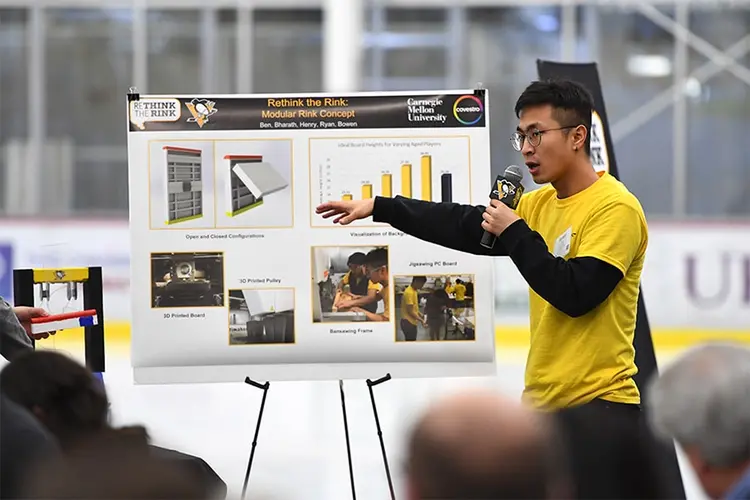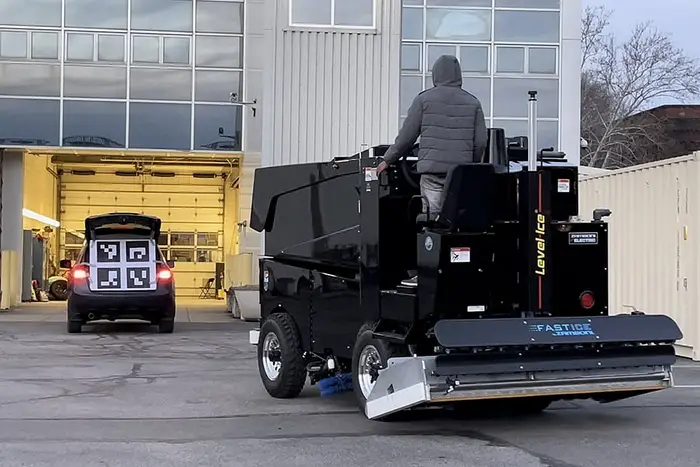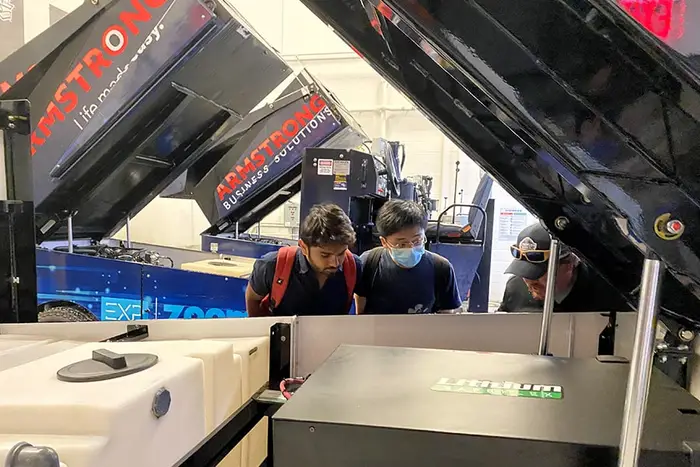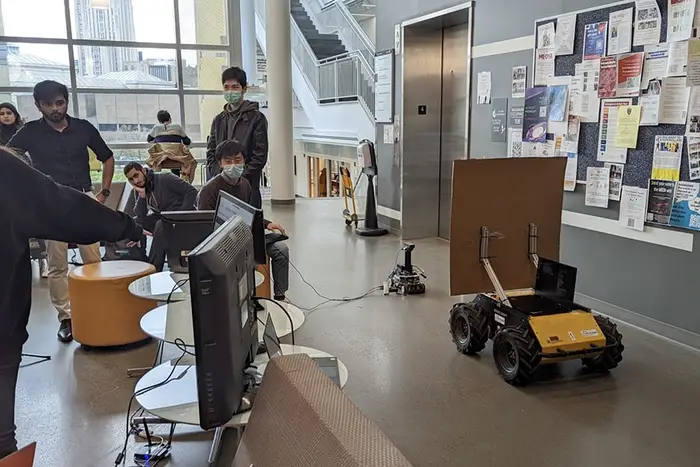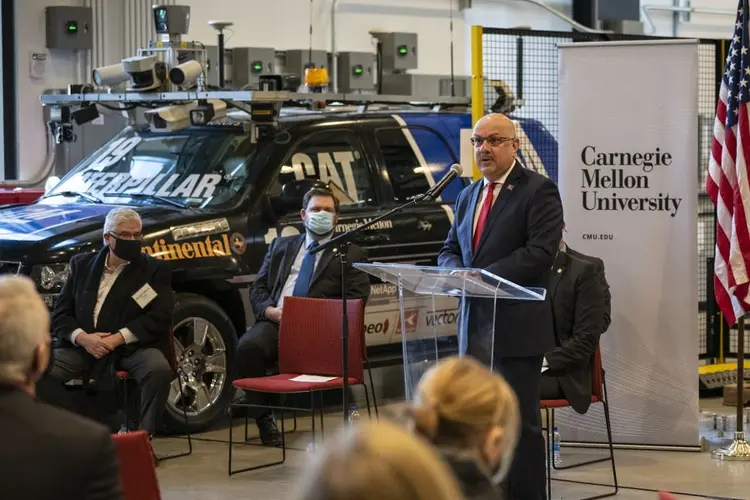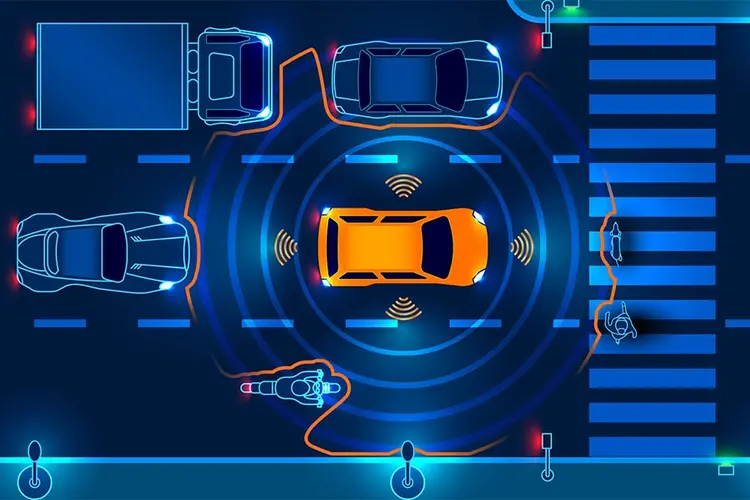CMU Pairs with Penguins on Autonomous Zamboni Machine
Media Inquiries
"It is a good example of how human-guided autonomous driving technology can be used in nonroadway domains." — John Dolan
Robots in Carnegie Mellon University's Newell-Simon Hall can explore the moon, slither across the ground, crawl down pipes and drive autonomously through deserts and cities. With its latest inhabitant, CMU researchers are putting autonomy to work on ice.
The student team from Carnegie Mellon's Robotics Institute(opens in new window) (RI), dubbed AI on Ice, has partnered with three organizations to add autonomous capabilities to a two-Zamboni machine convoy.
Locomation(opens in new window), a CMU spin-out company focused on bringing Human-Guided AutonomySM to long-haul trucking at scale across the U.S.; Zamboni(opens in new window), the company founded in 1949 that created the world's first self-propelled ice-resurfacing machine; and the Pittsburgh Penguins(opens in new window) share the goal of improving rink ice consistency using artificial intelligence.
"The connection with the Penguins and Zamboni was made for us by local autonomous trucking spinoff, Locomation, and has led to a great project of the type our program seeks, with strong systems engineering, electromechanical, sensing and programming/control aspects," said John Dolan(opens in new window), a principal systems scientist in RI and adviser on the project. "It is a good example of how human-guided autonomous driving technology can be used in nonroadway domains."
Nick Carcione, a master's student in RI, said that Zamboni machine operations present multiple challenges for ice rink owners.
"We looked at the business reasons for adding automation to the Zamboni machines. It's sort of expensive to resurface the ice, between operating the machine and training costs. We found that a lot of the jobs are seasonal, so they have to retrain employees every season and get them up to speed, which can lead to a lot of inconsistencies on the ice."
The CMU team is working on a two-Zamboni machine convoy system inspired by the Autonomous Relay ConvoySM model developed by Locomation, where a human operates the lead machine, followed by an electronically tethered autonomous Zamboni machine that duplicates the speed and direction of the leader machine. For the purposes of ice resurfacing, the follower machine will follow off-set to improve the efficiency of the ice resurfacing while decreasing the time needed to complete the process. CMU began working on this project in the fall of 2021.
After a semester of upfront design work and system planning, the team was ready to test out their AI in the spring of 2022 using a radio-controlled car and a Husky UGV(opens in new window) (unmanned ground vehicle) developed by Clearpath Robotics. Using the demonstration vehicles, they fine-tuned their software and experimented with different sensors and actuators on a smaller, more manageable scale than that of a five-ton Zamboni machine.
Now, with a vehicle on-site provided by Zamboni, the team has performed on-site testing at the UPMC Lemieux Sports Complex, the primary training facility for the Pittsburgh Penguins.
We are thrilled to see Locomation-mentored @CMU_Robotics students testing their autonomous @ZamboniCompany project for the first time on ice in partnership with the #Pittsburgh @penguins and Zamboni #AIonICE #HumanGuidedAutonomy pic.twitter.com/O1KwZvumRl
— Locomation, Inc. (@LocomationAI) December 19, 2022
This is not the Penguins' first collaboration with CMU. The Penguins, Covestro and Carnegie Mellon teamed up for Rethink the Rink(opens in new window), which challenged students to develop projects that would enhance the safety of the sport without compromising game performance. The Penguins won the NHL's Stanley Award(opens in new window) in 2022 for their Rethink the Rink partnership.
The Penguins previously invited the autonomous Zamboni machine graduate student team to watch a game against the Florida Panthers at PPG Paints Arena, a game the Penguins won in a shootout. For four members of the team, it was their first hockey game, and first time seeing a Zamboni machine in action.
"The game experience helped us understand some of the dynamics that come into play," said Rathin Shah, one of the CMU graduate students on the project team. "We don't just have to think about driving the vehicle, but also consider the safety aspect of the project. It's a big vehicle and safety is critical."
— Related Content —
